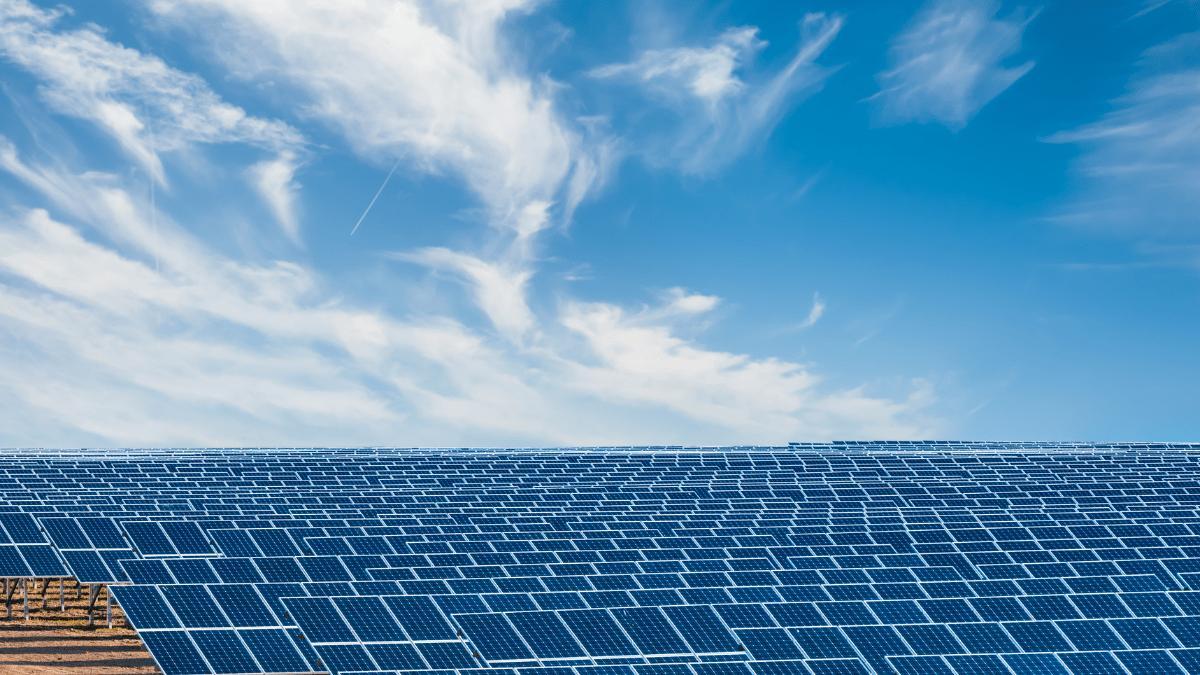Africa-Press – Mauritius. In the global push towards renewable energy, the attractive island nation of Mauritius, located in the Indian Ocean, has emerged as a ray of hope. The nation has embraced the revolutionary potential of solar energy due to its beautiful landscapes and plentiful sunlight.
Mauritius is leading a solar energy revolution as 2023 comes to a close, utilizing cutting-edge technology and progressive legislation to create a greener and more sustainable future.
This column examines the technical ideas guiding Mauritius’ transition to solar energy, outlining the achievements, ongoing initiatives, and bright future possibilities.
Despite the difficulties brought on by climate change, Mauritius acts as an example for nations all over the world, showcasing the effectiveness of solar energy in promoting energy independence and halting environmental damage.
The installed solar power capacity in the nation has surpassed 100 MW. The significant breakthroughs made in solar PV technology have been the primary force behind Mauritius’ transformation into a solar-powered nation.
Efficiency, cost-effectiveness, and environmental friendliness have all significantly increased with solar PV technology over time. Modern solar panels are more efficient in converting sunlight into electricity, which allows them to produce more electricity from the same amount of light.
Additionally, lower production costs as a result of improvements in manufacturing methods and materials have made solar energy economically viable for the country.
Mauritius has concentrated on grid connectivity and energy storage systems to maximize the usage of solar energy. Grid integration ensures a steady and dependable power supply by seamlessly integrating solar power into the already-existing energy infrastructure.
Modern grid management systems have made it easier to synchronize solar energy production with electricity demand, reducing waste and grid instability.
In addition, energy-storage innovations like lithium-ion batteries have turned into essential components of Mauritius’ solar energy environment. These storage options make it possible to store excess solar energy produced during the day and use it at night or during periods of high demand.
Energy storage systems improve the nation’s energy supply’s dependability and resilience by overcoming the intermittent nature of solar electricity. Solar Power Plant Projects
The construction of big solar power plants all across the island demonstrates Mauritius’ dedication to the transformation of solar energy. The 2 MW Anahita Solar Farm and the 20 MW Solitude Solar Park are notable solar projects.
These solar power facilities use the region’s abundant sunshine to produce clean electricity on a large scale. These initiatives have a big impact on lowering the country’s dependency on fossil fuels and reducing greenhouse gas emissions as they continue to grow.
Community Solar Initiatives In Mauritius, community solar efforts have gained ground in addition to utility-scale projects. These initiatives enable businesses and citizens to actively engage in the solar energy revolution.
Rooftop solar installations enable private residences and commercial establishments to produce their electricity and feed surplus power back into the grid.
These installations are supported by net metering rules. This decentralized strategy promotes energy independence and equips localities to aid in the sustainable growth of the nation.
Through a variety of incentives and regulatory support, the government of Mauritius has played a crucial role in assisting the shift to solar energy. Feed-in-tariffs (FiTs), tax credits, and grants have boosted private investment in solar energy projects, promoting the sector’s expansion.
A favorable policy climate for the growth of solar energy has also been produced as a result of the government’s commitment to lowering its dependency on fossil fuels and boosting the share of renewable energy sources in the energy mix.
Future Prospects and Challenges The future of solar energy in Mauritius seems bright. Solar PV efficiency and energy storage capacity are anticipated to rise more as technology develops, making solar energy even more affordable and practical.
The government’s ambitious goal of using 35% renewable energy in the country’s energy mix by 2025 creates the conditions for continued solar capacity growth.
The lack of available land for large-scale solar projects, the intermittent nature of solar energy, and the development of technical skills are still problems.
The government, corporate sector, and research institutes must work together to develop novel answers to these problems. Future solar projects in Mauritius might face significant problems due to rising sea levels.
The sustainability and success of the nation’s solar energy efforts depend on careful planning, robust design, and proactive coastal management to adapt to the effects of sea-level rise.
Mauritius can continue to use solar energy to its full potential while defending itself from the dangers posed by a changing climate by putting adaptive measures in place. The country of Mauritius has undergone a solar energy transition that exemplifies its unwavering dedication to a clean and sustainable energy future.
Solar energy has gained acceptance in the nation as a competitive alternative to conventional fossil fuels thanks to technology breakthroughs, grid connectivity, and supportive regulations.
Mauritius grows closer to meeting its goals for renewable energy as solar power plants grow, neighbourhood initiatives succeed, and technology advances.
By doing so, the country will be a shining example for other countries to imitate. Prospects for solar energy are still promising as Mauritius makes progress toward becoming a greener and more sustainable nation.
For More News And Analysis About Mauritius Follow Africa-Press







